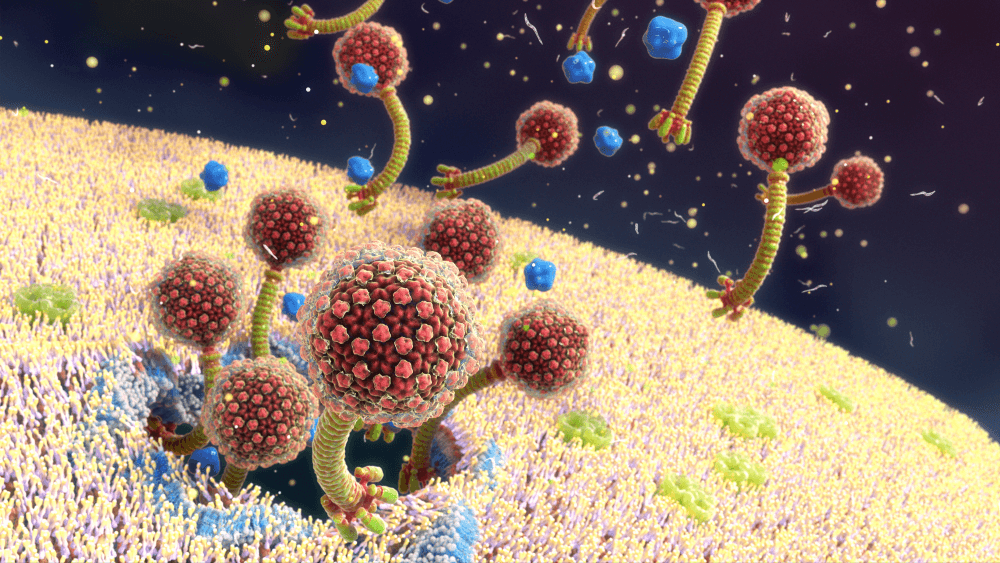Engineered Human Therapies
How Phages Infect Bacteria: Latest Research Uncovers Crucial Details
A new study used advanced techniques to show that phage entry is influenced by the cell's electrophysiology.
Aug 5, 2024
Siphoviruses exiting an infected bacterium, illustration. (Science Photo Library/Canva)
The process by which phages—viruses that infect and replicate within bacteria—enter bacterial cells has been researched for over 50 years. Now, researchers from the University of Illinois Urbana-Champaign and Texas A&M University have employed advanced techniques to examine this process at the level of a single cell.
“The field of phage biology has seen an explosion over the last decade because more researchers are realizing the significance of phages in ecology, evolution, and biotechnology,” said Ido Golding (CAIM/IGOH), a professor of physics. “This work is unique because we looked at phage infection at the level of individual bacterial cells.”
Phage infection begins with the virus attaching to a bacterium's surface. The virus then injects its genetic material into the cell. After entry, a phage can either compel the cell to produce more phages until it bursts (lysis) or integrate its genome into the bacterial genome and remain dormant (lysogeny). The outcome hinges on the number of phages infecting the cell simultaneously: a single phage leads to lysis, while multiple phages result in lysogeny.
The study, published in Current Biology, aimed to determine whether the number of infecting phages correlates with the amount of viral genetic material injected into the cell. The researchers used fluorescent labeling to tag both the phage protein shell and its genetic material. They then cultured Escherichia coli, exposed them to varying concentrations of phages, and tracked how many phages successfully injected their genetic material into the cells.
“We have known since the 70s that when multiple phages infect the same cell, it impacts the outcome of the infection. In this paper, we were able to take precise measurements unlike any study done so far,” Golding said.
Surprisingly, the researchers discovered that the entry of a phage’s genetic material could be hindered by other co-infecting phages. They observed that with more phages attached to the cell surface, fewer were able to enter.
“Our data shows that the first stage of infection, phage entry, is an important step that was previously underappreciated,” Golding said. “We found that the coinfecting phages were impeding each other’s entry by perturbing the electrophysiology of the cell.”
The outer layer of bacteria constantly handles electron and ion movement essential for energy production and signal transmission. In the past decade, the significance of bacterial electrophysiology in various phenomena, including antibiotic resistance, has become evident. This study opens new research avenues in bacterial electrophysiology's role in phage biology.
“By influencing how many phages actually enter, these perturbations affect the choice between lysis and lysogeny. Our study also shows that entry can be impacted by environmental conditions such as the concentration of various ions,” Golding said.
The research team aims to refine their techniques to gain a deeper understanding of the molecular mechanisms behind phage entry.
“Even though the resolution of our techniques was good, what was happening at the molecular level was still largely invisible to us,” Golding said. “We are looking at using the Minflux system at the Carl R. Woese Institute for Genomic Biology. The plan is to examine the same process but apply a better experimental method. We’re hoping that this will help us find new biology.”


















